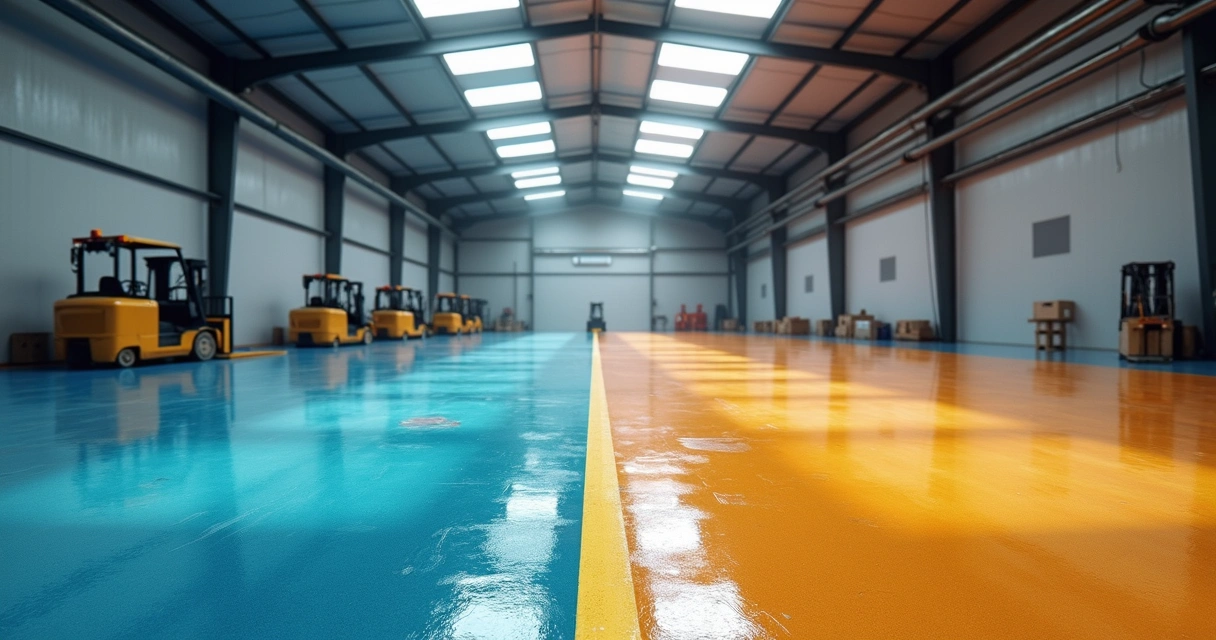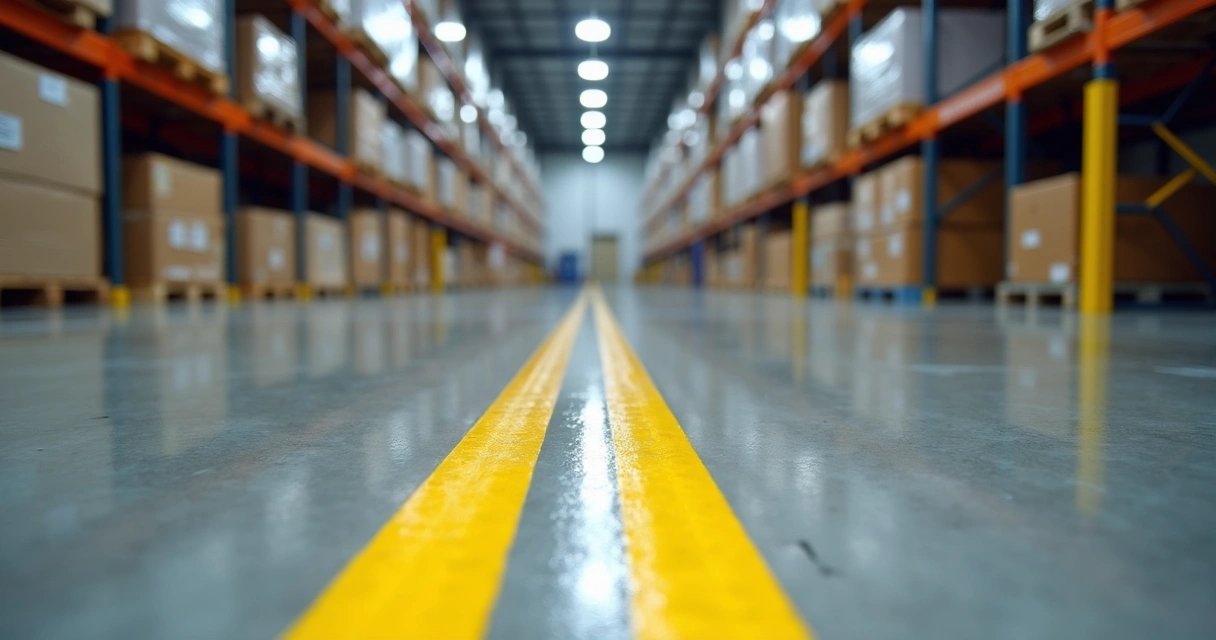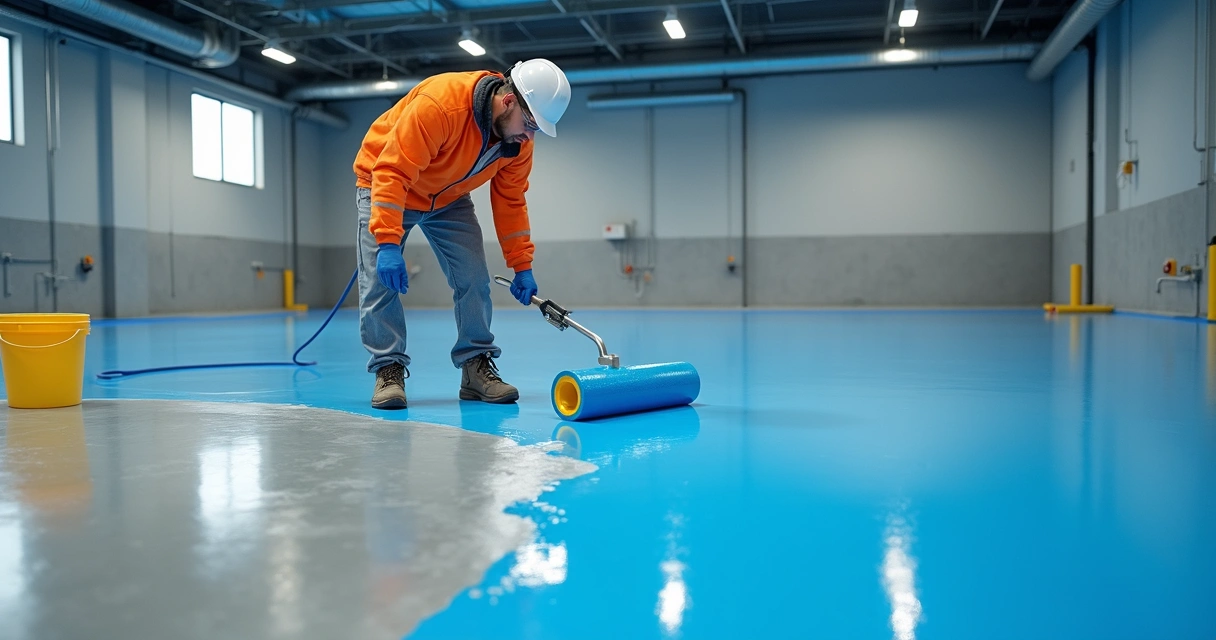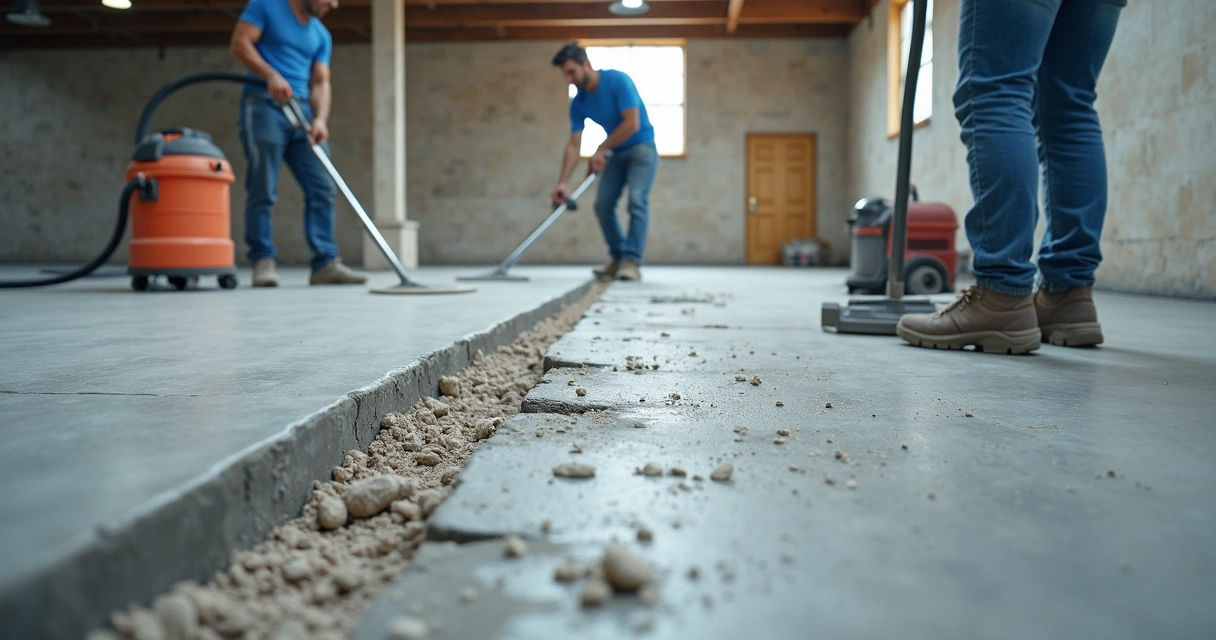When it comes to commercial spaces in Central Florida, flooring choices are more than just an aesthetic decision—they shape safety, maintenance costs, and that all-important first impression clients and staff take away. In our experience at GCM Best Services, few topics stir up as much debate as epoxy versus floor paint for high-traffic commercial environments. Business owners naturally want a finish that stands up to the heat, humidity, and heavy loads that are all par for the course in Florida. Let’s demystify these options, point out the science behind them, and give you clear, honest guidance based on two decades of delivering results throughout Orlando, Tampa, and Central Florida.

Understanding what’s at stake for commercial floors
We know local businesses—from auto shops and warehouses to retail, restaurants, and medical facilities—face a particular set of problems. A commercial floor does not get polite, everyday use. It gets dragged, scratched, mopped, and pounded by shoes, lifts, and rolling carts. Moisture is always lurking, thanks to our storms and air conditioning cycle. We hear from property managers about faded stripes, slippery walkways, flaked-up corners, and the cost of shutting down for repairs. No two buildings or businesses are alike, but many share the same pain points:
- Recurring costs and business disruption from frequent recoating
- Slippery surfaces during rainy months
- Easy scratching or staining, especially near entries and work areas
- Issues with dust, allergen buildup, and cleaning difficulty
- The need to meet regulatory or safety standards, like high-visibility aisles or ADA-compliant walking areas
Choosing the right floor finish is a balance of cost, downtime, and durability over time. There is no one-size-fits-all answer, but if you understand the core differences, you can match the material to your business needs.
The basics: What are epoxy and floor paint, really?
Epoxy coatings (and polyaspartics)
Epoxy floors start as a two-part, chemical-based system. When blended, these form a thick, hard, plastic-like coating that bonds to concrete in a way that’s almost permanent. Polyaspartics work similarly, often paired with or layered over epoxy—known for their rapid curing and resistance to hot tire pickup. In our projects, both options let us create smooth, seamless, and custom-finished floors. We also broadcast flakes or quartz into the mix to add grip or unique looks. Once cured (after prepping and any crack repair), epoxy floors are tough, non-porous, and somewhat flexible, which is why they’re found in factories, hospitals, and airplane hangars across the world.
Commercial floor paints
Regular paints for concrete floors are single-component, water- or solvent-based coatings. Some contain acrylic or polyurethane resins for better adhesion. They’re applied like wall paint—rolled or sprayed—usually in thin coats. Paint is good at adding color and basic UV protection, but it stays relatively soft and can’t achieve the thickness of epoxy. There are specialty paints that perform slightly better in terms of abrasion, but most still fall short in high-impact, wet, or chemical-exposed areas. In short: floor paint freshens up a surface and may last a couple seasons, but generally requires more frequent re-coating.
Epoxy bonds. Paint covers.
How each system stands up in Central Florida
Weather, moisture, and heat
If you manage property in Orlando or Tampa, you’re constantly at battle with moisture and heat. Concrete slabs sweat; humidity soaks in. According to NCBI research comparing commercial products for protecting concrete structures, epoxy delivers exceptional resistance to carbon dioxide permeability and strong protection against chemical attack, but it allows little water vapor to pass through. This means you need to address slab moisture before installing epoxy, or risk blisters and detachment, especially in our region. Most paints, on the other hand, are slightly more breathable but may peel or chalk in humidity, and show faster fading in sunlight. In our own fieldwork, we’ve seen unvented spaces or older slab foundations make both products work hard to stay stuck, but proper moisture testing and prep tilt the odds in epoxy’s favor.
Traffic wear, impacts, and abrasion
Epoxy is built for abuse. An NCBI peer-reviewed study evaluating mechanical and physical properties of coatings found that epoxy ranks much higher than solvent-based paints in both adhesion and surface hardness. Floor paint, unless specially formulated, tends to scuff, scratch, or even gouge under sharp or repeated impacts. Epoxy will show tire marks and, yes, can be gouged by dropped tools or heavy machinery, but the damage is usually cosmetic rather than structural. Painted surfaces, sadly, often shed or discolor in heavy traffic aisles in as little as a few months. Polyaspartic topcoats added over epoxy boost impact resistance even more, which is why they’re a mainstay in commercial garages and warehouses.

Appearance and color retention
Shiny, highly saturated colors and a long-lasting gloss are two big claims for epoxy flooring systems. According to laboratory evaluations by the Federal Highway Administration, epoxy coatings have significantly less gloss and color loss after outdoor and accelerated weather tests compared to acrylics or polyurethanes. This means your lines and walkways will look better, longer. Epoxy can be matched to your branding, color-coded for safety, or given creative effects—think speckled flakes in a school, metallic swirls at a restaurant, or sharp contrasting paths for warehouses.
Standard concrete paints fade faster in sunlight and scrub off as you clean. While it’s possible to touch them up, mismatch in color is common. For lobbies and customer-facing areas expecting a “just finished” appearance, epoxy finishes, especially with added UV-stable topcoats, give noticeably better results year after year. Paints can matte out very quickly and, in the Florida sun, lose their crisp look in surprisingly little time.
Slip resistance and cleaning
A slippery floor in a business isn’t just an inconvenience—it’s a clear liability. One advantage we’ve found with epoxy coatings is the ability to add sand, aluminum oxide, or vinyl flakes during installation for texture. This turns a glass-smooth floor into a grippy, walkable surface, even when wet (to a point—nothing beats a dry floor for safety). Paints can be mixed with grit, but the thinness of the layer sometimes makes this ineffective over time.
For cleaning, epoxy’s sealed surface means most oils, spills, and dirt come up with a mop or squeegee. Paints can absorb stains, especially from tires, grease, or food, leaving lasting marks. This can be especially important for auto shops, kitchens, or any facility where cleanliness is tightly regulated.
Installation timelines and downtime
Epoxy gets a bad reputation for “taking forever.” In reality, research from NCBI Bookshelf shows that basic 100% solids epoxy in a garage setting can dry to the touch in about an hour, with light foot traffic possible in roughly 48 hours. Car or heavy equipment access should wait another 48 hours if possible. Polyaspartic topcoats can trim this window down, sometimes to same-day walk-on use. Compared to paint, which usually allows reentry in 6–12 hours, this can seem long. But the trade-off is longevity—a proper epoxy job typically lasts years before recoating, while paint may need refreshing every rainy season.
For properties that cannot afford to close for days, we’ve shifted to quick-curing technologies and after-hours work. In those cases, paint’s fast cure can make sense for cosmetic fixes, but it’s rarely the top choice when downtime is a smaller concern than future repairs.

Chemical resistance and safety standards
For businesses using solvents, cleaning agents, acids, or oils, regular paint simply cannot withstand the chemical attack. Epoxy, due to its non-porous cross-linked structure, sheds most contaminants without softening or delaminating. That’s why it’s the coating of record for laboratories and processing plants. We’ve installed it everywhere from dentist’s offices to brewery floors for this reason. Paints, unless heavily modified, struggle to keep their color, film, and function even with casual exposure to these kinds of spills.
Cost comparisons: up-front and over time
Epoxy costs more to install. Paint costs more to re-do. In most Orlando-area projects, floor paint runs about a third the up-front price of epoxy, sometimes less. Epoxy’s material and labor cost are higher, given the preparation, multiple steps, and skill involved. But factor in the longer replacement cycle, fewer shutdowns, and lower maintenance, and epoxy typically wins at the 3–5 year mark—longer for lower-use spaces.
Polyaspartics, which are a close cousin to epoxy, sometimes increase that up-front investment but further reduce downtime. For facilities managers, the choice often comes down to short-term speed (paint) versus long-term value and reliability (epoxy).
Science and studies: What the research tells us
Let’s anchor our experience with independent conclusions:
- Adhesion and mechanical strength: Peer-reviewed studies at the NCBI found epoxy coatings have superior adhesion and hardness versus solvent-based paints, meaning they resist peeling and gouging under tough use.
- Gloss and aesthetic endurance: Federal Highway Administration tests demonstrated epoxy keeps its gloss and color longer than polyurethanes or acrylics in harsh environmental exposure, such as direct sunlight and heat.
- Resistance to color fade and chalking: Additional FHWA research on thermal behavior and surface coatings supports that epoxy maintains adhesion and appearance better than other commercial systems across outdoor and variable temperature tests.
- Vapor permeability and detachment risks: NCBI research notes that epoxies are highly resistant to many forms of attack but trap water vapor, so they require professional installation and moisture mitigation in humid regions like ours.
These findings echo what our crews see on Central Florida job sites. The science points to epoxy when you need lasting performance, but also to the need for expert prep work—something we never skip at GCM Best Services.
Real-world results in our Orlando projects
We’ve handled every kind of commercial floor—from expansive warehouse bays near International Drive to small staff kitchens on Sand Lake Road. Patterns emerge. Epoxy floors, installed over concrete that’s been moisture tested, ground, and repaired, look better at year four than most floor paints do in month four. Business owners call us for fixes less often. And incidents of “surprise” peel-ups, especially near loading docks, cut deeply. The mistakes we see come from cutting corners on prep (which affects both paint and epoxy)—and from expecting paint to do a job it just isn’t built for.
But, context matters! We won’t put epoxy everywhere. There are times—such as low-traffic back rooms or temporary spaces—where a one- or two-year paint refresh is perfectly fair. We lay out all options, so our clients can decide what’s best for their own risk tolerance and timeline.
How preparation shapes long-term results

So many flooring failures start before the first coat is even poured or painted! At GCM Best Services, our standard for commercial epoxy always includes slab moisture testing, grinding or shot-blasting, crack and joint repair, and detailed cleaning. For paint, we wash and sometimes lightly etch the surface for better adhesion. Moisture control is more forgiving with paints, but if you skip these steps with epoxy, even the best formulation won’t last a season.
Drainage is essential for outdoor or exposed locations. We often pair our concrete services with floor coatings to address ponding and cracking before they start. For further reading on protecting concrete and integrating drain systems, see our posts about crack prevention and repairs by licensed contractors.
Applications: When to choose epoxy, and when to pick paint
Epoxy and polyaspartic coatings are ideal when:
- Your floors face high daily traffic, heavy loads, or regular scrub-downs
- You need a long period (three years or more) between major recoats
- Chemical resistance or frequent spills are part of your operations
- Appearance—rich gloss, eye-catching colors, logos or stripes—matters
- Slip resistance and easy cleaning are priorities
- Your downtime cost is lower than the cost of future disruption
Floor paint makes sense when:
- You only need moderate traffic protection (like break rooms or utility closets)
- Up-front budget is tight, and quick installation is critical
- You’re OK with regular touch-ups and a shorter replacement cycle
- Moisture issues make thicker coatings risky or cost-prohibitive
The bigger picture: Flooring as an investment, not just a patch
Choosing a flooring system isn’t just about today’s problem. It’s about peace of mind next year. Longevity, cleaning, staff safety, and even how customers see your space—they all add up. At GCM Best Services, we always take a holistic approach. If you’re reshaping your entire facility, don’t forget the role that sound concrete choices and well-integrated upgrades like driveway paving can have on your workflow and curb appeal.
Ultimately, we want to see clients make a decision they’re comfortable living with—not just today, but years down the road. That peace of mind is at the core of everything we do, from the detailed estimate to a warranty you can count on. Sometimes, a coat of paint is just what’s called for. But in our experience, epoxy almost always ends up paying for itself where ongoing performance is needed. Your floor is a foundation for your business—treat it that way from the start.
Conclusion: Which system is best for your business?
If we could put it in one sentence: Epoxy and polyaspartic coatings offer the best long-term value, durability, and cleanability for most commercial floors in Central Florida, provided the slab is well-prepared and moisture-controlled. Floor paints remain a fast budget fix for low-traffic or temporary spaces. But for any business looking to limit downtime, reduce long-term costs, and create a standout impression for customers, epoxy is our proven answer.
Want to discover the right fit for your commercial property? Reach out for a tailored, no-obligation consultation, see real samples, or schedule a site visit with our Orlando staff. We’re here to take the worry out of flooring, so you can focus on running your business.
Ready for a professional quote? 📞 (407) 250-1948 • 24–48h • Orlando, Tampa & area.
Frequently asked questions
What is epoxy flooring?
Epoxy flooring is a seamless, chemical-cured coating made from a two-part resin system, which hardens to form a thick, plastic-like layer over concrete. It’s notable for its strong bond with the base slab, making it extremely durable, moisture resistant, and easy to clean. You’ll often find it in garages, warehouses, hospitals, and showrooms, with a range of finishes like solid colors, chip blends, and non-slip textures. At GCM Best Services, our process starts with professional prep and includes everything needed for a smooth, long-lasting floor.
How does floor paint compare to epoxy?
Floor paint is a thinner, single-component coating that provides basic color and surface protection, but it’s less durable than epoxy and usually has to be reapplied every 1–2 years in high traffic or wet environments. While paint is faster to install and preferred for quick refreshes or tight budgets, it doesn’t have the same bond, impact resistance, or chemical repellency. Epoxy, by contrast, is thicker, longer-lasting, and much better at resisting abrasion, water, and stains, especially in commercial or industrial settings.
Is epoxy worth it for commercial floors?
For most commercial floors, especially those with high traffic, chemical exposure, or appearance standards, epoxy is absolutely worth the investment. While the upfront cost is higher, the less frequent need for recoating, improved cleaning, and better safety (through slip-resistant surfaces) often result in long-term savings. Our experience across Orlando and Central Florida is that epoxy floors pay for themselves over time by reducing repair downtime and maintenance costs.
How much does epoxy flooring cost?
Epoxy flooring for commercial spaces in Florida typically ranges from $4–$9 per square foot, depending on slab condition, prep requirements, number of colors or design features, and whether polyaspartic or decorative options are added. Small jobs or intricate patterns may cost a bit more per foot. While the price is higher than standard paint, many owners find the investment worthwhile given the floor’s 5–10 year lifespan with proper care.
How long does epoxy flooring last?
Well-installed commercial epoxy flooring usually lasts 5–10 years or more, depending on use, cleaning, and maintenance practices. Heavy industrial traffic, regular fork truck operation, or constant exposure to harsh chemicals will shorten the life somewhat, but even then, repairs tend to be simple and contained. In gentler settings like retail stores and clinics, we’ve seen floors last well past a decade, especially with proper cleaning and occasional touch-ups.